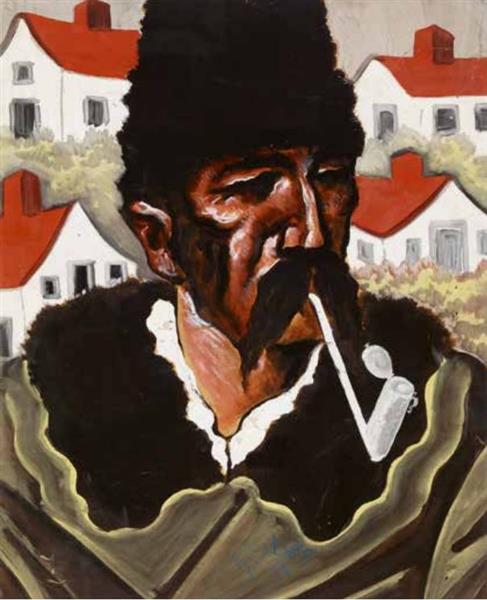Description
Hugó Scheiber, an outstanding exponent of Hungarian art of the twentieth century, is recognized for its unique integration of post -impressionist style and modernism, which is evidence painting, That a testimony of Scheiber's technical ability and its focus concentrated in the human figure can be considered, reveals several layers of meaning through its composition, color and representation of characters, in this case, a man with a pipe.
The protagonist of the painting is a man who, sitting in a contained and relatively neutral environment, becomes the central focus of the work. Its relaxed posture and the way in which it supports the pipe suggests an introspection that invites the viewer to contemplate not only the figure, but also the frozen moment in which it is located. Scheiber uses an almost intimate approach, bringing the viewer closer to the life and personality of its model. The man's face is strong and marked features, characteristics that are accentuated by the warm colored palette that Scheiber chooses to portray it. Brown, ocher and yellow tones predominate in the work, providing a feeling of warmth and depth.
The composition of "Pipával Ferfi" is significant in its simplicity and effectiveness. When frameting the character with a background that, although subtle, provides an adequate context, Scheiber makes the figure of man not only highlight, but also breathe and relate to the surrounding space. The technique he uses remembers the approach of other post -impressionist artists such as Vincent Van Gogh, who also used the color and way to express the essence of the human being. However, although there is a stylistic connection, Scheiber's work enters a more psychological field, suggesting an inner narrative rather than a simple superficial representation of its subject.
This narrative is enhanced by the clear attention that the artist pays to lighting. The shadows and soft lights on the face of man not only highlight his features, but also seem to tell a story, evoking a feeling of melancholy and reflection. This innovative use of light is a common aspect in the works of the artists of their time, since many sought to explore the relationship between the human figure and its environment through this light dimension.
Hugó Scheiber, born in 1873, has been a bridge between the Hungarian art of the past and the new currents that emerged in Europe. His work "Pipával Férfi" is emblematic not only of his artistic legacy, but also of the evolution of the representation of the human being in modern art. Although Scheiber production covers various topics and styles, this painting stands out for its direct approach to the figure, which can also be a subtle criticism of modernity and its effect on the individual.
When observing "Pipával Ferfi", we face a portrait that goes beyond mere external representation. It is a deep examination of human essence, which invites introspection and reconstruction of personal narratives around the figure that is presented. Scheiber, with its mastery and sensitivity, offers the viewer a trip through the intimacy of the human soul, using the pipe as a symbol of the reflective and contemplative moment that we can all experience.
KUADROS ©, a famous paint on your wall.
Hand-made oil painting reproductions, with the quality of professional artists and the distinctive seal of KUADROS ©.
Art reproduction service with satisfaction guarantee. If you are not completely satisfied with the replica of your painting, we refund your money 100%.

